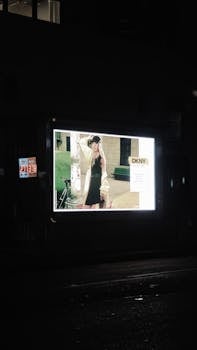Outdoor communities are evolving, blending traditional interactions with the demands of modern life. The rising popularity of outdoor spaces fosters a sense of belonging while promoting sustainability. As cities grow, these communities emerge to meet diverse recreational needs and interests.
Driven by shifting cultural values, the future of outdoor communities is bright. They encourage an active lifestyle, strengthen social ties, and provide a sanctuary in nature. With increasing awareness of environmental issues, these spaces also play a crucial role in conservation and ecological education.
As we explore the evolution and future trajectory of outdoor communities, this article will delve into their significance, trends, and potential challenges. We will also highlight their role in enhancing community interaction, ecological wellness, and individual well-being.
The Importance of Outdoor Spaces
Outdoor spaces are vital for mental and physical health. They serve as venues for social activities, relaxation, and exercise, promoting a community-centric lifestyle. Access to parks and recreational areas fosters belonging.
Studies show that individuals who spend time in nature report reduced stress levels and improved moods. These benefits emphasize the importance of designing green spaces in community planning. Encouraging outdoor interactions also strengthens community ties.
Moreover, outdoor spaces offer opportunities for education about local ecosystems and wildlife. Teaching children and adults about nature enhances environmental stewardship. Outdoor communities can act as schools of ecological awareness.
Accessible outdoor spaces can significantly impact public health by encouraging physical activities. From hiking to gardening, these activities help combat sedentary lifestyles common in urban settings. Enabling various activities within these spaces is essential.
Understanding the importance of outdoor spaces leads to better community planning that prioritizes green areas. With careful consideration, communities can create inviting environments that promote well-being and connectivity among residents.
Emerging Trends in Outdoor Communities
A notable trend is the increasing popularity of urban parks and gardens. These spaces offer an escape from city life, providing greenery and tranquility. They act as critical hubs for social interaction.
Another emerging trend is the focus on multi-functional outdoor spaces. Modern design emphasizes parks that can host events, exercise classes, and community gatherings. Such flexibility caters to diverse community needs.
Additionally, technology integration is reshaping outdoor spaces. Features like Wi-Fi access, interactive installations, and digital maps enhance user experience. These innovations make outdoor areas more accessible and engaging.
Furthermore, many communities are embracing sustainability in outdoor designs. Eco-friendly materials, native plant landscaping, and renewable energy sources are increasingly popular. These practices prioritize environmental health and resilience.
As outdoor communities evolve, they increasingly address inclusivity. Creating spaces for all demographics—children, seniors, and those with disabilities—ensures everyone can enjoy and benefit from these areas.
The Role of Community Engagement
Community engagement is key to developing successful outdoor spaces. Residents should participate in planning to ensure the areas meet their needs and desires. Public input fosters a sense of ownership.
Organizing community events in outdoor spaces enhances engagement and utilization. Activities like pop-up markets, fitness classes, and movie nights attract residents and create social bonds. Such events are crucial for building community spirit.
Moreover, involving local organizations can amplify the impact of outdoor initiatives. Partnerships with schools, businesses, and environmental groups can diversify programming and funding opportunities. Collaborative efforts enhance resource availability and engagement.
Effective communication through social media can promote outdoor community events and news. Creating dedicated online platforms or groups informs residents about activities and encourages participation. Digital outreach can significantly expand community interaction.
Encouraging volunteerism offers an avenue for sustained engagement. Residents can participate in maintenance, programming, and stewardship activities. This involvement fosters a deeper connection to outdoor spaces and pride in the community.
Challenges Facing Outdoor Communities
Despite their benefits, outdoor communities face challenges. Urbanization leads to land scarcity, making green space planning more difficult. Developers often prioritize buildings over parks, impacting community health.
Maintenance and funding for outdoor spaces are persistent issues. Without adequate resources, parks can become neglected, deterring visitors. Sustaining quality requires ongoing commitment from local governments and community members alike.
Safety concerns can also hinder the utilization of outdoor spaces. Poor lighting, lack of supervision, and crime can discourage people from visiting. Addressing safety issues cultivates a welcoming environment for all residents.
Seasonal changes impact outdoor space usage. Weather conditions may restrict accessibility and available activities, making it essential to adapt facilities for year-round use. Functionality needs to be a year-round consideration.
Finally, ensuring inclusivity and accessibility for all demographics remains a critical challenge. Outdoor spaces need to be welcoming to everyone, regardless of age or ability, which requires thoughtful design and ongoing assessments.
The Role of Technology in Outdoor Communities
Technology is transforming outdoor spaces in unprecedented ways. From apps that facilitate event organization to virtual reality displays for education, the potential is vast. Communities can enhance user experiences through innovative tech initiatives.
Smart park features, such as solar-powered lighting and wi-fi zones, improve connectivity. Such elements attract modern users who value both technology and nature. Enhancing accessibility through technology fosters inclusiveness.
Online platforms can facilitate active community forums, promoting events and sharing user experiences. Social media can be used to showcase local flora and fauna, inspiring community pride. Engaging storytelling enhances relatability and ownership.
Additionally, technology can aid in environmental monitoring. Using sensors to collect data on air quality, wildlife movements, and soil health empowers communities to take action. This information enhances ecological awareness and informed decision-making.
Preparing for a tech-fueled future in outdoor communities requires ongoing adaptability. As technologies change, communities must embrace innovation while staying true to their core mission of promoting well-being and sustainability.
Case Studies: Successful Outdoor Communities
Examining successful outdoor communities highlights best practices. One exemplary case is Central Park in New York City. Its diverse programming draws millions and fosters strong connections among residents.
Another noteworthy example is Millenium Park in Chicago, which integrates art, culture, and nature. Hosting various events year-round, this space serves as a vibrant social hub. Its design emphasizes accessibility and engagement.
The High Line in New York City showcases innovative use of urban space. This repurposed railway has become a green corridor, offering recreational activities and enriching the neighborhood. It demonstrates effective community revitalization through outdoor design.
Parks across Europe, like the River Walk in San Antonio, emphasize multi-use approaches. They incorporate ecosystems into urban planning while promoting economic growth through tourism and local businesses. Experience-driven parks facilitate community engagement.
Each case study underscores the importance of tailored design, community engagement, and sustainability. Learning from these models can inspire future initiatives in outdoor communities across the United States.
Conclusion
Outdoor communities are instrumental in enhancing individual well-being and fostering social connection. As we move towards a future filled with new trends and technologies, the importance of these spaces remains unchanged. By adapting to challenges, embracing inclusivity, and leveraging technology, outdoor communities can thrive.
Ultimately, collaboration among residents, local organizations, and government entities will play a crucial role in shaping vibrant outdoor spaces. Looking ahead, these communities can emerge as bastions of sustainability, well-being, and connectivity.
Envisioning and creating a future for outdoor communities rich in opportunity and engagement is essential. Through careful planning and shared commitment, we can cultivate thriving spaces that stand the test of time. The journey continues, and the future is bright for outdoor communities.


